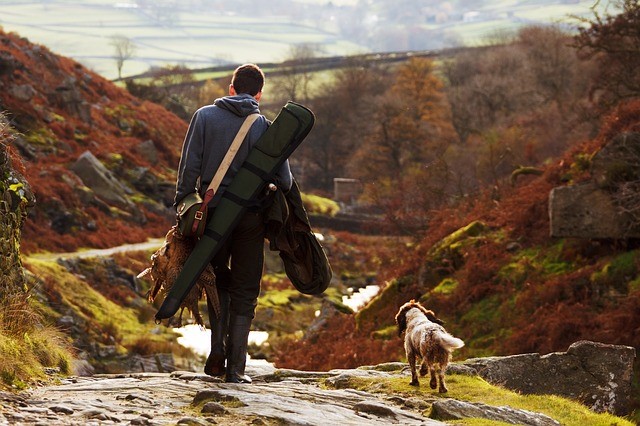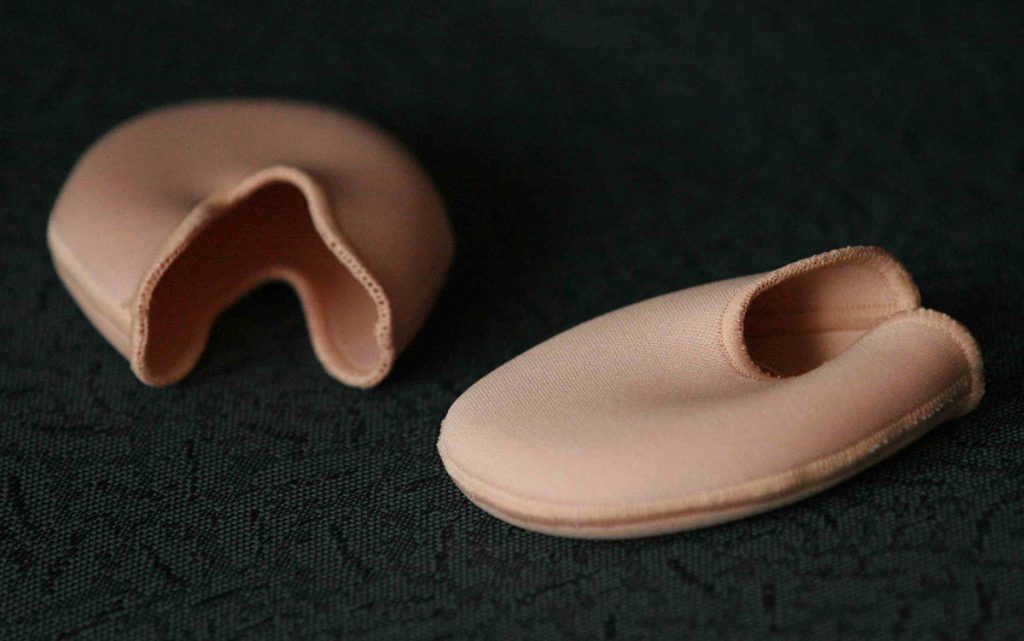Keeping your feet dry and warm is vital when hunting during the winter season. When you are out there in the wilderness, you will be traversing rivers, lakes and other water bodies, which means your feet will be exposed to water and other forms of moisture. And as you may probably know, your feet will be the first parts of your body to be exposed to the cold and moisture. Overexposure to extreme cold can lead to frostbites, hypothermia, and other serious issues, meaning you may be forced to cut your hunting trip short. So, how can you keep your feet warm and dry during the winter hunting season?
Wear the Right Socks
One of the most effective methods of keeping your feet warm during a winter hunting trip is by investing in the right pair of socks. In short, socks are your first defense against moisture and cold. Therefore, if you choose the right pair, they will go a long way in keeping your feet warm and toasty during the cold season. So, which type of socks should you wear during your winter hunting trip?
First, avoid cotton socks at all costs. As much as cotton socks are comfortable, they are terrible choices for cold weather. Cotton socks have minimal insulation value since they tend to absorb and retain moisture. Furthermore, when cotton socks become wet, they lose all their insulation value. Another problem with cotton socks is that they will coat your feet with a film of perspiration, which means that they will absorb heat from your body, thus leaving you feeling cold. Worse yet, wet socks may leave you with blisters on your feet, due to the reduce lubrication. The result is that your feet will be cold, and uncomfortable, making your trip a miserable one.
With that said, socks made fleece, shearling, synthetic material or merino wool are perfect for cold, winter weather. What makes these options great for winter weather is that if they get wet, they will not lose their insulating properties. Furthermore, these socks will wick away moisture and sweat away from your feet, thus acting as an insulator. Also, these socks tend to dry quite fast, in case they become wet from perspiration. The heat your body emits will be enough to dry these types of socks. Another benefit of synthetic socks is that they are generally thicker than conventional cotton socks, which means their absorbent capacity is significantly higher.
Consider Electric Socks
Heated socks are also an effective option when it comes to keeping your feet warm and toasty during your winter hunting trip. Basically, heated socks conventional socks that have been equipped with integrated heating methods. These socks help to keep your feet warm, thus helping to reduce the risk of frostbites or severe cold. However, all heated socks are not made equal. Therefore, before you buy a pair of heated socks, you need to pay attention to various, factors to ensure you choose the right ones for your hunting trip. Some of the factors to consider include:
Fabric and Material
Just like standard socks, you need to consider the material used to make heated socks before buying a pair. The most commonly used materials are polyester, nylon, merino wool, and acrylic. All these materials are mixed in different quantities to produce the warmest socks possible. Besides that, these fabrics have great thermo-regulating properties and they are itch-free, making them perfect for extended winter expeditions. Avoid heated socks made of cotton blends. As much as cotton blends are quite comfortable and more affordable, they have poor moisture-wicking capabilities. Also, cotton heated socks are not as durable as those made of synthetic blends.
Heat Duration
As a hunter, it’s rare to spend more than 5 hours at a time in your stand. And the good news is that most of the heated socks that you will find on the market can comfortably keep up with that duration. If you want a pair of heated socks that can heat your feet more than 5 hours, then you will have to dig deeper into your pocket. Heat duration is directly proportional to the battery life. Therefore, you need to ensure that the socks you purchase can keep your feet heated throughout your hunting session.
Heating Method
Some heated socks use external batteries that you can remove and replace while others use rechargeable batteries. Socks with external batteries are more versatile than those with internal batteries since you can simply remove the batteries and use them as ordinary socks. On the other hand, those with internal rechargeable batteries will serve you better when it comes to extended winter hunting trips. If you opt for those with rechargeable batteries, then you will also need to pay attention to the charging duration. You should choose a pair whose batteries require a few hours to charge.
Maximum and Minimum Heat Output
Heated socks come with different levels of heat outputs. Therefore, you need to choose a pair that offers the right amount of heat output. If your budget can allow, you should buy a pair that has a decent minimum output and a high maximum output. Such a pair will keep your feet warm throughout your winter hunting trip, even if you encounter water, moisture, ice, snow or other similar elements. After all, there is no need to buy heated socks if they cannot keep your feet warm during the cold weather.
Use Thermal Insoles
Thermal insoles provide an effective and affordable means of keeping your toes toasty, warm and comfy in cold weather. They work by insulating your shoes, thus sealing in warm air, while helping it circulate evenly inside the shoes. These insoles tend to be thicker than conventional insoles. The thicker they are, the more heat they can help to retain. Apart from sealing in warm air, these insoles will also wick away sweat, perspiration and other forms of moisture that may be present inside the shoe. Their base is made of a heat-conducting material such as latex or aluminum.
There are two main kinds of thermal insoles on the market. These are merino wool insoles and aerogel insoles. Just as the name suggests, merino wool is obtained from merino sheep. It’s one of the best wool fibers in the world. It’s soft, breathable, and insulating, thus allowing moisture to escape while keeping in the warmth. Aerogel insoles, on the other hand, are firmer and sturdier than those made of merino wool. They are also cheaper. However, they are almost as effective as merino wool insoles when it comes to heat retention. When buying thermal insoles, make sure they have antimicrobial capabilities and decent shock absorption.
The Right Type of Boots
Shoes play an important role in helping to keep your feet warm. Therefore, if you are going for a winter hunting expedition, you need to make sure that you wear the right boots. When hunting, you will be interchanging between walking and sitting. Therefore, you will need a pair of boots that can keep your feet comfortable and warm throughout the trip. When purchasing winter hunting boots, you should look for a pair of boots that have high ankles, instead of low-rise ankles. Shaft height of 6 to 7 inches is ideal. Also, the boots should have a waterproof liner like Gore-Tex, to keep out water and moisture. They should also be equipped with additional protective features like heels, rands and rubber toes.
You also need to consider the volume of insulation and the temperature rating. Winter hunting boots should have a minimum of 600 grams of insulation. A pair of boots whose insulation is lower than 600g will not provide adequate warmth. It’s also important to pay attention to traction. When you are hunting in the wilderness during winter, you will come across ice, snow, mud and all sorts of slick and slippery surfaces. Therefore, you should ensure that the boots you are wearing have adequate traction.
Insulated Boot Pads
If you will be hunting in extremely cold areas, then you should consider bringing an insulated boot pad. Insulated boot pads are designed to prevent heat that is lost through conduction. These boot pads are available in a wide range of materials, from fleece to sheepskin. Besides preventing heat loss and helping to keep your feet warm, boot pads can also provide arch support. Whether your hunting trip will only last a single day or you intend to spend several days in the wilderness, insulated boot pads will help to keep your feet toasty and warm, regardless of the conditions that you encounter out there.
Insulated Mats or Cardboards
When hunting deer, you will be spending approximately 2 to 3 hours in your stand, waiting for the perfect moment to take your shot. And as you sit in your stand, moisture can seep from the ground can seep through your footwear, causing your feet to become wet and cold. This is where an insulated mat comes in. Insulated mats are designed to act as a barrier between the wet ground and your feet.
Insulated mats are made of waterproof, closed-cell foam, which is then lined using synthetic materials. Besides keeping your feet dry and warm, insulated mats will also help to minimize fatigue. Insulated mats are a great choice for cold-weather hunting. In case you don’t have the money to purchase one, you can simply use a piece of cardboard. While cardboard may not be as comfortable as an insulated mat, it will protect your feet against cold and moisture.
Conclusion
Keeping your feet warm, dry and toasty during the winter hunting season could mean all the difference between coming home empty-handed or coming back with deer or turkey. And nobody wants the former. Therefore, if you want to have a successful winter hunting trip, you should make sure that you invest in quality winter footwear.






0 comments